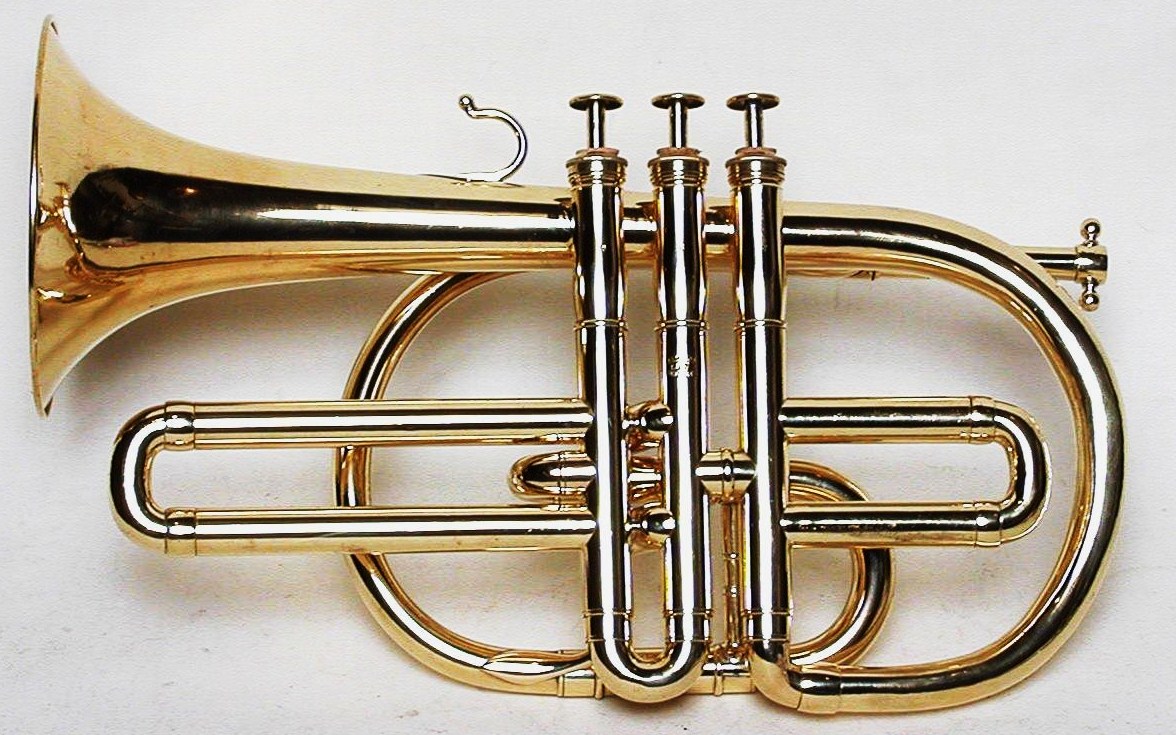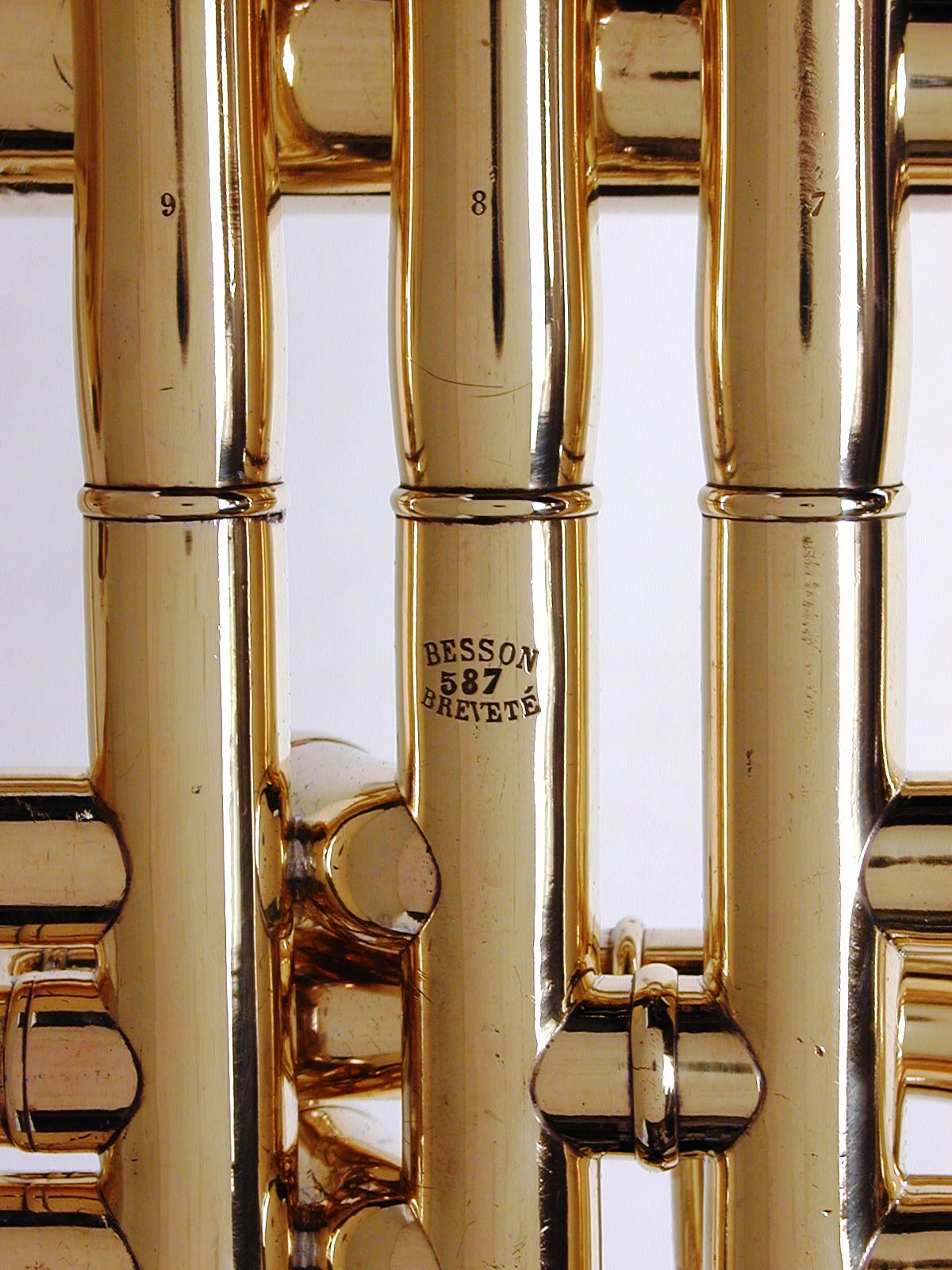Besson Cornet from the 1850s
This cornet belongs to the great paleontologist and cornet historian Niles Eldredge. Niles has spent much effort researching the elusive history of the French brass instrument maker, Besson. Besson's shop was both prolific and innovative although fraught with business complications. It was among the French makers accused of patent infringement by Sax. The founder, Gustave Besson, had to leave the country to avoid additional legal action.
This instrument was made before Besson left for England in 1858 and take note of the monogram stamped on the bell in the last photograph. At a glance it could easily be mistaken for the later initials "FR" or "FB" as seen on later Besson instruments, but a closer look reveals "GB" for Gustave Besson. Niles also points out that on instruments made after Besson left the business in the capable hands of his wife, Florentine, and later daughter, Marthe, the feminine case of the word breveté is used (brevetée).
Besson, in both France and England, was an important force in the development of all sizes of brass instruments, but most importantly by establishing the form of our modern trumpet. This cornet was made at a time when Besson was already making cornets with the more modern Perinet piston valves, whereas it has Stoelzel valves, which were phased out soon after. This is among the earliest half dozen or less instruments known to exist made by Besson. For more history of early cornet development and Besson in particular, there are some excellent articles on VintageCornets.com.
This cornet at first appeared in pretty good condition other that the sloppy solder in several places. Somebody made their best effort to restore it, but it seems rather amateurish for such a historically important instrument. The biggest challenge is revealed in the third photo that shows that there is a large replacement tube in the curve of the bell that was very crudely installed. I made a replacement tube and the simple way to attach it would be with ferrules at each end, but that would also be somewhat unsightly. Instead, I very carefully silver soldered it to the original bell parts after removing dents from them.
The balance of the restoration was rather straightforward. Niles didn't request reproductions of the original A shank or missing crooks, which probably put the cornet in Ab and G. The existing crook is for the key of F and appears to be original with this instrument. It is a fairly good player, but most importantly, represents one of Besson's early and unique cornet designs.








